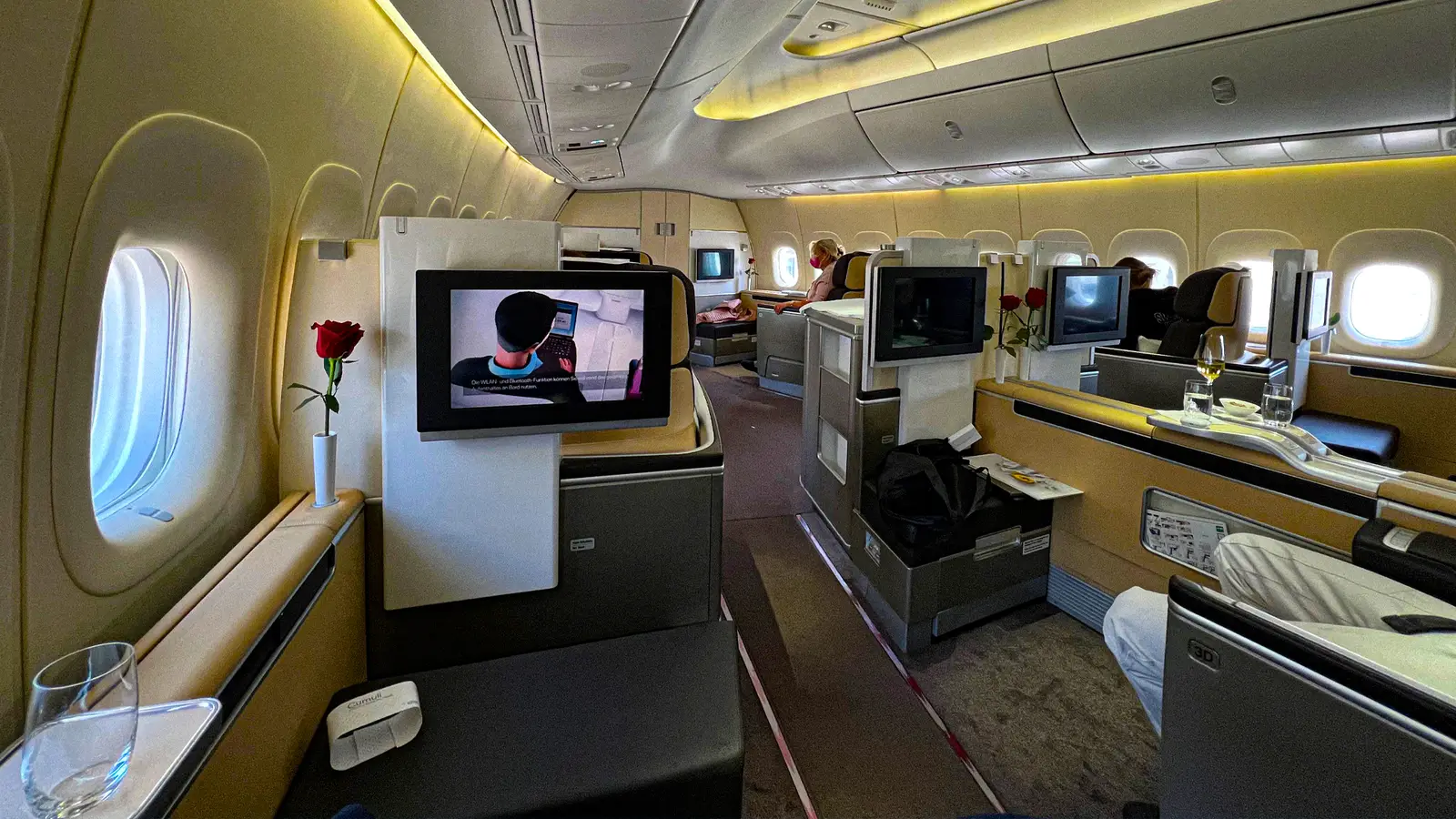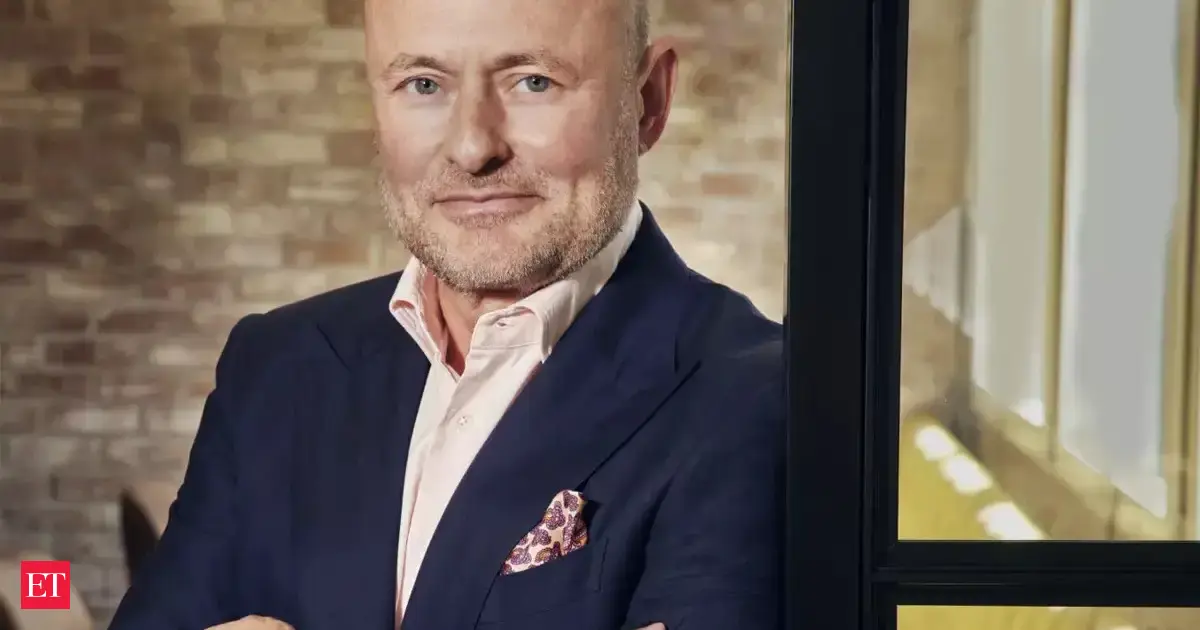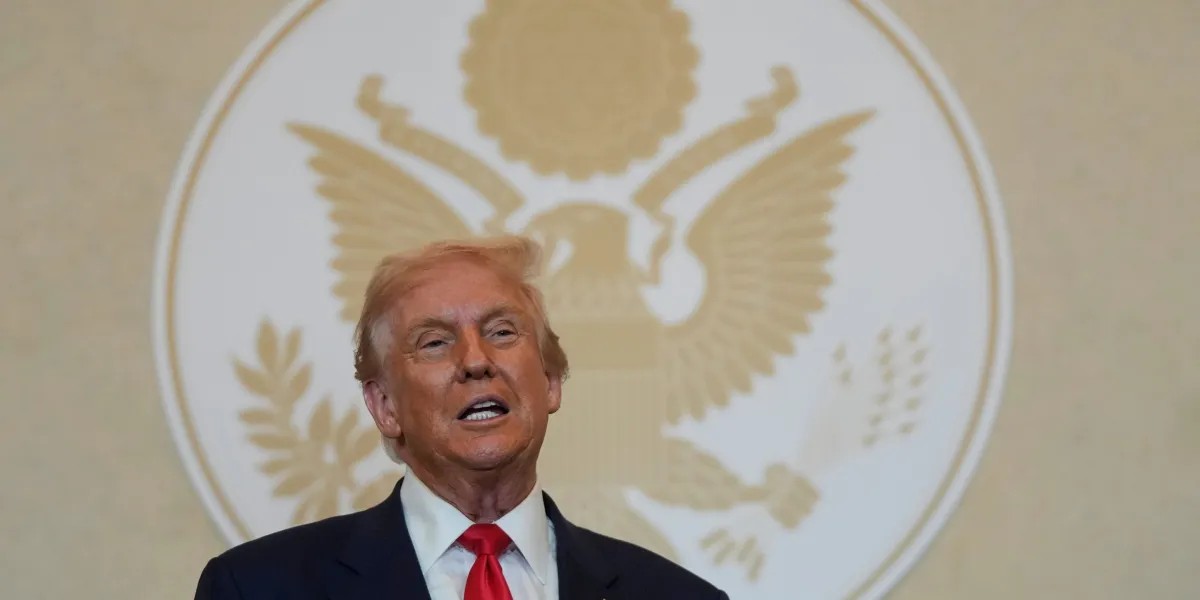Copyright Simple Flying

Lufthansa has long been synonymous with German engineering, reliability, and long-haul aviation excellence. Among its fleet, the Boeing 747‑8 has stood out as a flagship aircraft, bridging decades of aviation history while representing the airline’s commitment to premium long-distance travel. As passenger expectations evolve, particularly in business and first class, Lufthansa has decided to invest in a significant cabin upgrade program, known as “Allegris,” aimed at revitalizing the iconic jumbo jet experience. This decision reflects more than just aesthetics. In a competitive global airline market, cabin comfort, privacy, and modern technology can influence passenger loyalty and profitability. By upgrading the Boeing 747-8, which is scheduled to commence later in 2025, Lufthansa is not only maintaining its reputation as a premium carrier but also ensuring that its flagship aircraft remains relevant and competitive for years to come. Lufthansa History Founded in 1953, Lufthansa has grown to become Germany’s largest airline and one of the world’s most respected carriers. Its history is intertwined with aviation milestones, from early transatlantic services to the introduction of modern widebody jets. The airline’s reputation for engineering precision and service excellence has been built over decades, creating a brand synonymous with reliability and quality. Over the years, Lufthansa has been a pioneer in adopting new aircraft technology. From the first generation of jets to today’s modern fleet, the airline has continuously evolved to meet both operational and passenger demands. Iconic aircraft like the Boeing 747‑400 and now the 747‑8 have become symbols of Lufthansa’s global reach and premium service standards. The 747‑8, introduced in the 2010s, represents Lufthansa’s commitment to long-haul travel with a focus on efficiency, range, and passenger comfort. It has become a flagship aircraft, hosting premium passengers on routes across Europe, North America, Asia, and beyond. Maintaining this aircraft in a modernized state is both a nod to tradition and a strategic investment in the airline’s future. Reasons For Upgrading The 747‑8 Cabins One of the primary reasons for Lufthansa’s cabin upgrades is evolving passenger expectations. Long-haul travelers today demand more than just a seat; they expect privacy, comfort, advanced technology, and an overall seamless experience. While the 747‑8 is a reliable aircraft, its older cabins lag behind competitors’ long-haul offerings, particularly in business and first class. Airlines such as Emirates and Qatar Airways are leading the way in premium travel. By upgrading seats, personal suites, lighting, and in-flight entertainment ensures Lufthansa can meet modern passenger standards and maintain its reputation as a premium carrier. Beyond passenger comfort, financial considerations are critical. Premium Cabin options generate the highest revenue per flight, especially on transatlantic and Asia-bound routes. Modernizing these cabins allows Lufthansa to maintain competitive yields and attract high-paying travelers who might otherwise choose carriers with newer, more luxurious products. Even incremental improvements in premium economy and economy cabins contribute to overall satisfaction and loyalty, helping Lufthansa protect its market share in a highly competitive global airline environment. Another reason for the upgrades is Lufthansa’s long-term commitment to the 747‑8. Despite the emergence of more fuel-efficient twin-engine aircraft like the Airbus A350 and Boeing 787, Lufthansa continues to operate the 747‑8 because of its capacity, range, and prestige. The aircraft can carry numerous passengers on high-demand long-haul routes while still offering premium cabins for profitability. By investing in cabin modernization, Lufthansa extends the aircraft’s operational life and ensures it remains relevant, efficient, and appealing to passengers, combining both strategic and financial benefits for the airline. The Allegris Cabin Concept The Allegris concept represents Lufthansa’s approach to modern long-haul travel, emphasizing comfort, privacy, and advanced technology across all cabin classes. In business and first class, this includes fully enclosed suites, wider seats, and ergonomic layouts that make long flights more comfortable, while premium economy and economy see improved seating and personal space. Allegris also upgrades inflight entertainment and connectivity. Passengers can enjoy larger screens, enhanced audio, on-demand entertainment, and charging options like USB-C and wireless charging. These improvements ensure that the 747‑8’s cabins remain competitive with newer aircraft while retaining the jumbo jet experience. The design also focuses on aesthetics, well-being, and sustainability. Improved lighting, thoughtful storage, and high-quality finishes enhance comfort and create a modern, premium feel. The Allegris program also emphasizes sustainability, using recyclable materials for seats, blankets, cushions, and covers. Overall, Allegris balances style, functionality, and efficiency, ensuring Lufthansa’s 747‑8s continue to meet passenger expectations on long-haul routes. Implementation Challenges Upgrading the 747‑8 cabins is a complex undertaking, due to the aircraft’s unique design and operational requirements. The narrow upper deck combined with the wide main deck creates challenges for seat installation, particularly in premium suites in business and first class. Engineers must carefully consider weight distribution, structural modifications, and certification requirements, making the process far more complicated than a simple seat replacement. Any retrofit would likely need to be carefully planned to minimize disruption to operations and keep aircraft in service on key long-haul routes for as long as possible. Passengers might experience mixed cabin layouts during the transition, and implementing such upgrades would require close coordination with maintenance teams. However, Lufthansa has not publicly confirmed any specific retrofit strategy for the 747‑8, so all discussions of phased approaches should be considered speculative. Additional challenges include integrating heavier, more advanced seats and entertainment systems without compromising aircraft performance. Modifications must preserve the 747‑8’s mass and balance restrictions, fuel efficiency, and cargo capacity. Beyond technical and engineering hurdles, the airline also faces logistical issues such as sourcing specialized components, scheduling retrofits across multiple aircraft, and coordinating with regulatory authorities to ensure compliance with safety standards. These combined challenges make the upgrade program a major undertaking, but one necessary to modernize the fleet and improve the passenger experience. Passenger Experience Improvements The upgraded cabins deliver tangible benefits for passengers across all classes, with the most significant improvements in business and first class. Business class passengers will enjoy fully enclosed suites with privacy, sliding doors, personal climate control, and ergonomic seating designed for long-haul comfort. First class passengers benefit from wider seats, additional storage, and high-end materials that create a sense of luxury rarely matched by competitors. These upgrades ensure that passengers traveling on premium tickets feel a marked difference from older cabin layouts. Premium Economy and Economy cabins also see meaningful enhancements. Passengers gain increased legroom, improved seat design, and larger entertainment screens, making even economy travel more comfortable and enjoyable. Lufthansa has also focused on optimizing cabin layout and lighting to improve personal space and reduce fatigue on long flights. Even small improvements in these cabins contribute to overall passenger satisfaction and strengthen brand loyalty, especially for travelers who fly frequently. Connectivity and entertainment have been brought up to modern standards. Passengers can now charge devices via USB-C and wireless charging, access a larger selection of entertainment options on upgraded screens, and stay connected with 4G mobile networks during flight. These changes not only enhance convenience and comfort but also ensure the 747‑8 can compete with newer aircraft models in passenger expectations. Overall, the Allegris upgrades significantly elevate the flying experience, combining luxury, functionality, and technology to meet modern long-haul travel demands. Future Outlook And Strategic Importance Lufthansa’s 747‑8 cabin upgrades represent a strategic investment to keep the aircraft competitive and relevant in premium long-haul travel. By modernizing its cabins, Lufthansa signals that the 747‑8 will continue to serve as a flagship aircraft, offering the comfort, privacy, and technology that today’s passengers expect. The move also helps the airline remain competitive as other carriers introduce new aircraft with advanced suites, upgraded entertainment systems, and enhanced long-haul experiences. Upgrading older aircraft is a way to bridge the gap between existing fleet assets and new-generation aircraft, ensuring that Lufthansa can meet evolving passenger expectations without immediately replacing large numbers of aircraft. Any future upgrades would likely need to be carefully planned to maintain operational continuity, keeping aircraft in service on key long-haul routes for as long as possible. While specific retrofit plans have not been publicly confirmed, the goal would presumably be to gradually enhance the passenger experience across the fleet without major disruptions. Such careful planning is also important to manage maintenance schedules, crew training, and route allocation efficiently. From a financial and operational perspective, such upgrades could extend the aircraft’s lifecycle and maximize revenue potential from premium passengers. Fully enclosed business and first-class suites, enhanced entertainment systems, and improved connectivity attract high-yield travelers, while updates in premium economy and economy cabins improve overall passenger satisfaction. By modernizing the 747‑8, Lufthansa would reinforce its reputation as a premium carrier and ensure the aircraft remains a valuable and versatile asset for long-haul operations well into the future.



